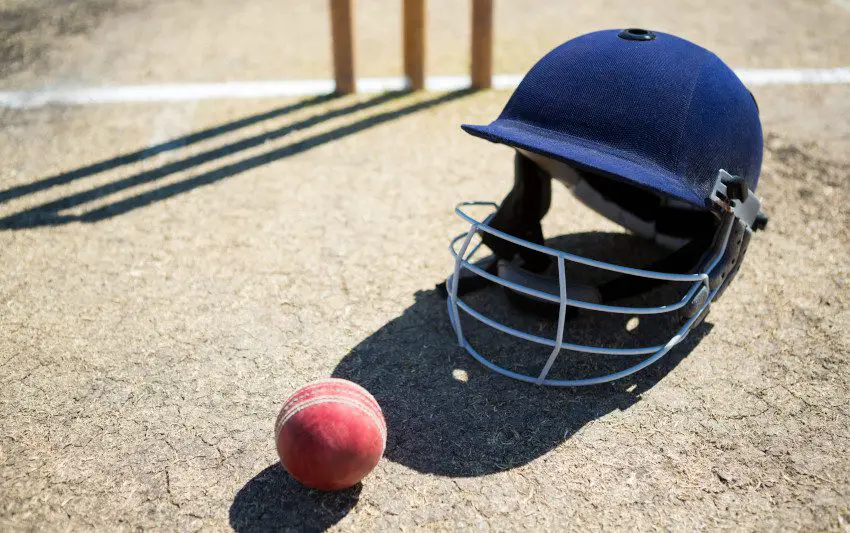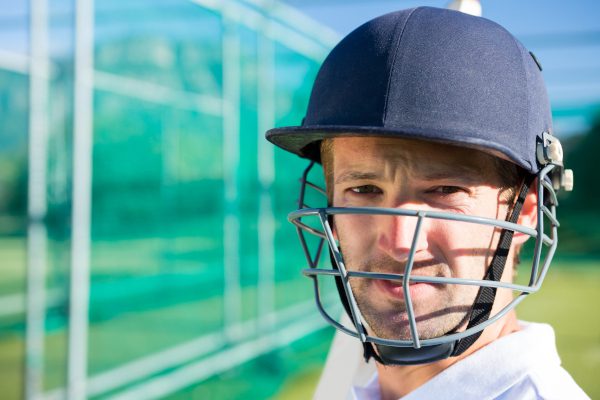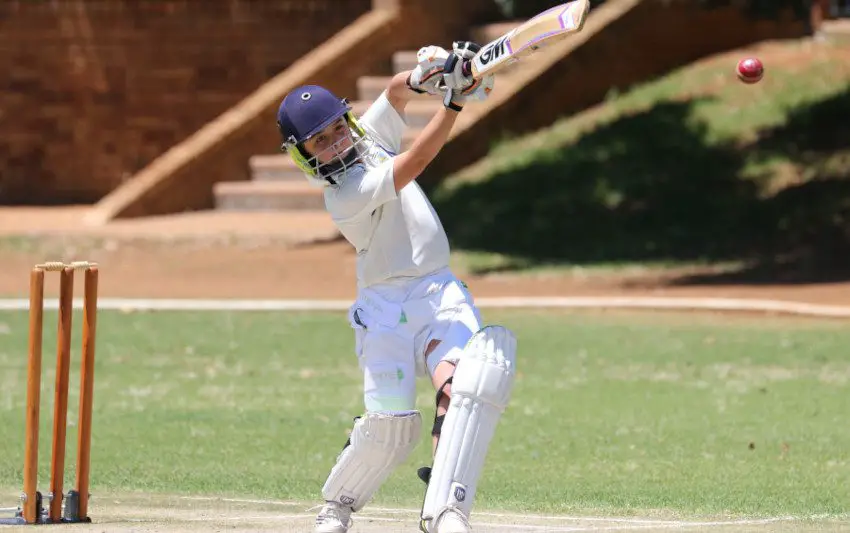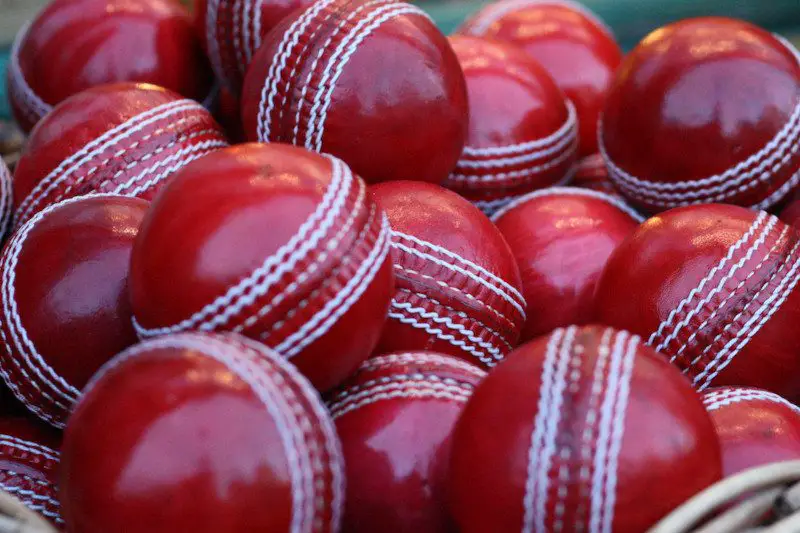Table of Contents
Helmets have become a key piece of safety equipment of cricketers the world over. This hasn’t always been the case. Earlier helmets were based on motorcycle helmets and didn’t have to conform to any kind of safety standard.
At the same time, modern day helmets are produced to meet the safety standards of the International Cricket Council (ICC) and are used by batters, wicket keepers and close in fielders to avoid a tragic incident from happening.
They use cutting edge technology when making cricket helmets, to maximise both the safety and protection of the users in order to absorb shock to the head. But what are the individual parts of a modern-day cricket helmet?
Here we break it down piece by piece.
What are the Parts of a Cricket Helmet?
- Cricket Helmet Shell
- Cricket Helmet Grill
- Cricket Helmet Padding
- Cricket Helmet Ear Pads
- Cricket Helmet Chin Strap
- Cricket Helmet Neck Guard

Shell
The outer shell of the helmet is the part that is designed to take the brunt of the impact from the ball, and is the most essential component.
It has a large surface area and is made from different raw materials including fiberglass, carbon steel, and ABS plastic.
The outer part can be customised into different colours, especially in shorter forms of the game like T20s.
Grill
The grill of the helmet is required to protect the users face from injury. Its appearance resembles a net and is designed so that it protects but also doesn’t restrict visibility. They are made from different materials such as polycarbonate and metals such as titanium.
Some helmets have a grill made from steel which offers good protection but is a heavier choice compared to titanium. It can be adjusted in position to allow more visibility, but it is advised to make sure a cricket ball cannot easily fit between the top of the grill and the peak of the helmet when the cricketer is hit, and good ventilation is also recommended.
Some batters choose to wear a helmet without it at all. This has the benefit of maximum visibility but the obvious downside of no facial protection.
Padding
Cricket helmet’s primary function is protection, but they must be comfortable to wear too. Inside the shell there is foam padding which helps the helmets mould to the user’s head shape. Also, the padding can be adjusted to suit different cricketer head sizes too for more comfort.
The high density foam padding also serves as a shock absorber when the helmet is hit by a cricket ball. The padding also stops the helmet from wabbling around when playing, thus increasing the comfort and minimising irritation.
Ear Pads
Quite simply, these are additional bits of padding designed to protect the users ears from impact. The grill does cover the ears but the use of padding behind them is an extra layer of protection and comfort.
These are available in different colours so can be created with franchise cricket in mind. Some manufacturers use a unique colour of ear pad to promote their brand.
Chin Strap
The chin strap is what helps keep the helmet in place so it could protect the head. It must be fitted securely so that the helmet can do its job in protecting the user. Most straps also have a piece of plastic which goes under the chin and is an extra layer of protection.
These are fully adjustable to accommodate different head sizes. Checking the fitting throughout a season is vital as the chin strap can be stretched which leads to a loose fitting helmet.
Neck Guard
The most recent innovation in cricket helmet manufacture and one that was created after a tragedy. Australian cricketer Phillip Hughes was struck in the neck whilst batting and died from the injury he sustained.
The neck guards are made from plastic and are attached to the rear of the helmet.
These have taken some getting used to by the modern-day player and some have reported a feeling of claustrophobia when using them.
Although it is unlikely to be struck in the neck, it is a real danger in the sport, and one that is easily avoided. Masuri were the first manufacturers to create neck guards for cricket helmets.

Legislation of Cricket Helmets
There has been a push of the ICC to make helmet wearing compulsory, but this has been refused. The ICC has instead left the decision up to the individual nations. There is a variety of laws within different nations because of this.
England require all batters and wicket keepers to wear a helmet in first class matches.
This is different in India and New Zealand where cricket helmets are not compulsory.
Australia has its own variation which requires helmets to be worn by batters who face fast or medium paced bowling.
Whatever a nation decides in terms of wearing a helmet of not, each helmet must conform to ICC standards.

Manufacturers of Protective Equipment
Most leading brands within cricket (Gunn and Moore, Slazenger, Readers) all produce cricket helmets which are readily available and used worldwide.
There are also companies which specialise in cricket helmets such as Masuri and Shrey. Masuri is a popular choice and one that first utilised titanium as the raw material used in its manufacture.
Cricketers opt for this due to its lightweight qualities. Shrey manufacture helmets which have shorter peaks for wicketkeepers and have neck guards which fit other manufacturers cricket helmets.
Conclusion
The benefits of cricket helmets is undoubtable and are a key piece of safety equipment regardless of head size and head shape. There are also several helmet accessories which might make wearing the helmet even more safe and comfortable.
Whether playing international cricket or a charity game with friends, it is important to wear them, to keep safe and enjoy the game without the worry of suffering a major injury.


